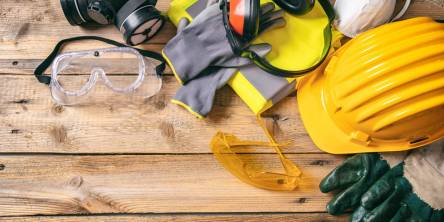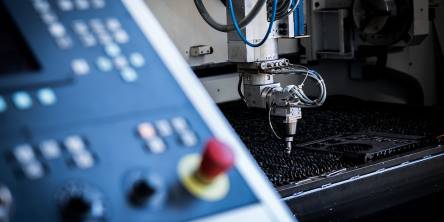What Makes a Good Quality Brick Machine for Large-Scale Construction Projects?

Durability and Build Quality
High-quality brick machines are built from robust materials like steel and cast iron. These materials resist wear and tear, ensuring long-term reliability. Reinforced structural components and corrosion-resistant coatings contribute to the machine's longevity. For instance, heavy-duty gearboxes withstand high operational stresses, reducing breakdowns.
Efficiency and Speed of Production
Efficiency in brick production is crucial. Top-tier machines can produce up to 1,500 bricks per hour, minimizing downtime and increasing output. Automated systems streamline processes and reduce manual labor. Features like mold vibration and rapid curing technologies improve both speed and brick quality.
Maintenance and Reliability
Regular maintenance is easier with modular components and intuitive design. High-quality brick machines, like those from Lontto, include easily accessible parts, reducing service time. Automated diagnostic systems detect issues early, preventing costly downtimes. Reliable machines function consistently under heavy workloads, ensuring uninterrupted project progress.
The Role of Technology in Brick Machines
Automation Features
Automation enhances efficiency in brick machines by reducing manual intervention. Modern brick machines include programmable logic controllers (PLCs) which manage key operations. These controllers optimize the production process by adjusting speed, pressure, and feed rates based on real-time data. Machines with advanced automation can produce up to 1,500 bricks per hour, ensuring consistent output without the need for constant oversight.
Advanced sensors are crucial for monitoring the machine's performance. They detect any deviations and trigger alerts for preventive maintenance, minimizing downtime. Self-diagnostic systems streamline troubleshooting by identifying faults quickly, allowing engineers to address issues promptly.
Precision and Consistency
Precision and consistency are vital for producing high-quality bricks. Laser technology and computer-aided design (CAD) systems ensure exact measurements and uniformity in each brick. Laser-guided cutting tools create bricks with precise dimensions, reducing waste and ensuring they meet construction standards.
Integrated quality control systems measure the strength and durability of bricks during production. Machines equipped with these systems perform continuous checks, ensuring that each brick meets specified criteria. This constant monitoring leads to fewer defects and higher overall product quality.
Technological advancements in brick machines play an essential role in large-scale construction projects, as they improve efficiency, minimize downtime, and ensure product consistency.
Read more: Types of Concrete Blocks used in Construction Industry
Best Practices in Using Brick Machines for Construction
Safety Measures
Safety measures are crucial when operating brick machines in construction projects. Operators must wear appropriate protective gear such as helmets, gloves, and safety glasses. Every machine should come with an emergency stop button positioned within easy reach. Regular maintenance checks, including inspecting electrical parts and mechanical components, can prevent malfunctions. Training for operators on machine use, troubleshooting, and emergency procedures ensures safer handling.
Optimizing Output
Maximizing the output of brick machines involves several strategies. First, use high-quality raw materials like cement, sand, and aggregates to produce robust bricks. Second, maintain a consistent operating schedule to prevent downtime. Monitoring and adjusting the machine's settings for optimal performance can improve efficiency. Additionally, implementing automation features such as programmable logic controllers can streamline production, reducing errors and increasing speed. Finally, regular maintenance and prompt repairs keep the machinery running smoothly, contributing to higher output.
Conclusion
Selecting a high-quality brick machine is crucial for the success of large-scale construction projects. Emphasizing durability, efficiency, and advanced technology ensures consistent and reliable production. Top models stand out for their performance and features. Safety measures and regular maintenance are essential for optimal operation. By focusing on these key elements, construction projects can achieve higher efficiency and superior brick quality.
FAQs
What materials are typically used to manufacture bricks with these machines?
High-quality bricks are usually made from materials like clay, cement, sand, and sometimes fly ash or other aggregates. The raw materials are compressed and molded into bricks, then cured for strength and durability.
How do automated brick machines improve production efficiency?
Automated brick machines reduce manual labor by utilizing programmable logic controllers (PLCs) that handle key functions like adjusting speed, pressure, and feed rates. This leads to faster production, consistent brick quality, and less operational downtime.
What are the key maintenance practices for brick machines?
Regular cleaning, lubrication of moving parts, inspection of components, and prompt replacement of worn-out parts are essential maintenance practices. Machines with modular components and automated diagnostic systems can further simplify the maintenance process.
How many bricks can a brick machine produce in a day?
The production capacity varies by model, with some machines capable of producing 1,440 to 6,000 bricks per day. Factors like the type of machine, automation features, and raw materials used will affect the overall output.
Similar Articles
The rise of home-based businesses has been especially significant among women, allowing them to combine income generation with the flexibility needed to manage other responsibilities.
Packaging is not just like a protective shield that is responsible for protecting your product; it's more than that. Like in our lives, we build our relationships on the basis of our communication skills. Similarly, this happens between the buyer and the packaging of the product.
Alright, let's cut to the chase. Gen Z is shaping up the work culture like no other generation, flipping the script on traditional office jobs and embracing the digital nomad lifestyle. With the whole world as their office, finding the perfect spot with solid Wi-Fi, dope cafes, and an unbeatable vibe is key.
The health and safety of workers should be one of the top considerations before starting a new construction project. Companies need to ensure that all aspects of employee safety are taken care of before stepping foot on the construction site.
If you have reached the point in your business adventures where you find yourself in need of a new office, then it’s time to give yourself a high five. This is a pivotal moment in your life, and you should acknowledge that you have made it one step closer to your end goal.
Never in the history of business has it been easier or more lucrative for individuals to use their knowledge and skills to make money from home. Whether you develop a primary occupation or are planning a side hustle, home-based businesses allow people to generate cash over the course of the year without commuting, paying for external child care, or punching a clock that fits someone else’s schedule.
You’re thinking about how to start a laser engraving business at home but don’t know where to start. You have so many questions that you need to be answered, such as “How do I get customers?” “What equipment do I need?” and “How do I learn the trade skills for laser cutting?” You begin to wonder whether it’s a viable business at all.
Working from home has become a strong career option for many. More and more people are turning to freelancing full time or being remote workers. It's become common for small business owners and entrepreneurs to have a home office HQ. How so?
Running a home business presents challenges: kids, pets, or laundry constantly threaten to interrupt your workflow. To combat the potential distractions, use the following nine tips to keep the interruptions at bay and increase your home business productivity.









